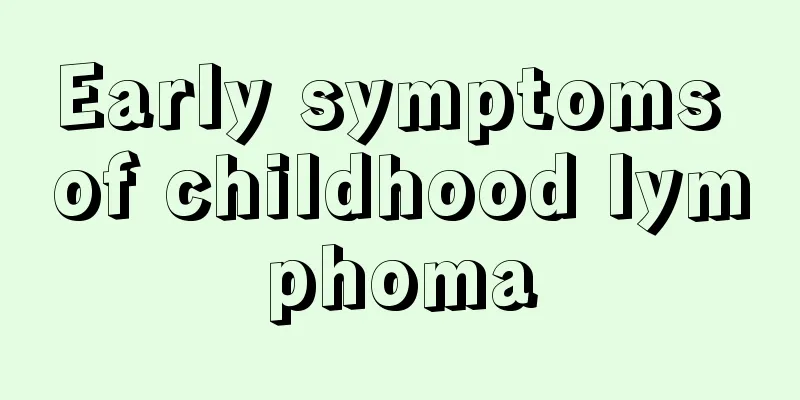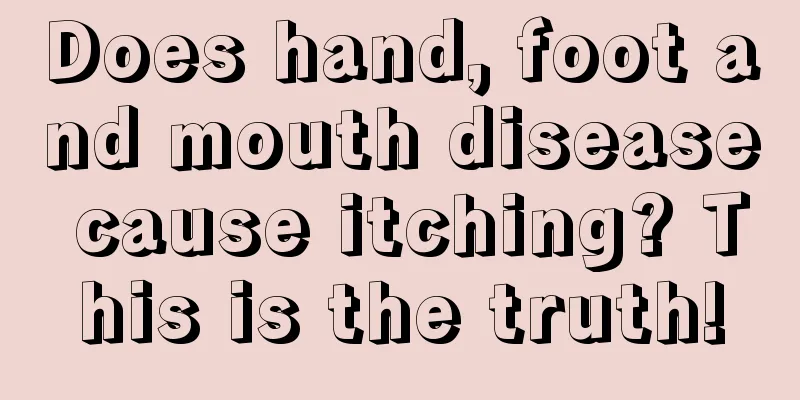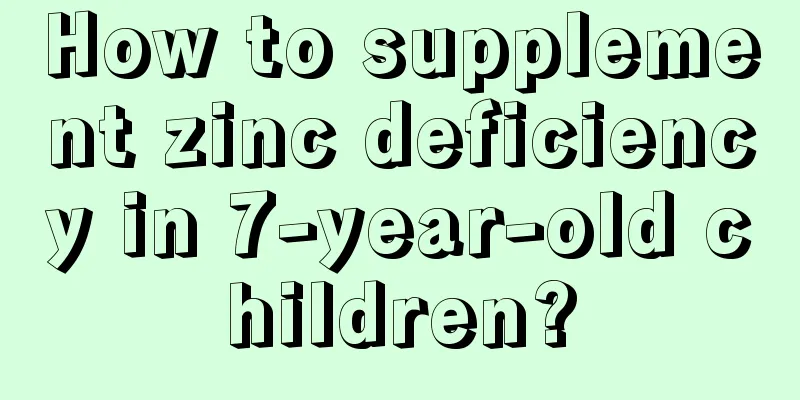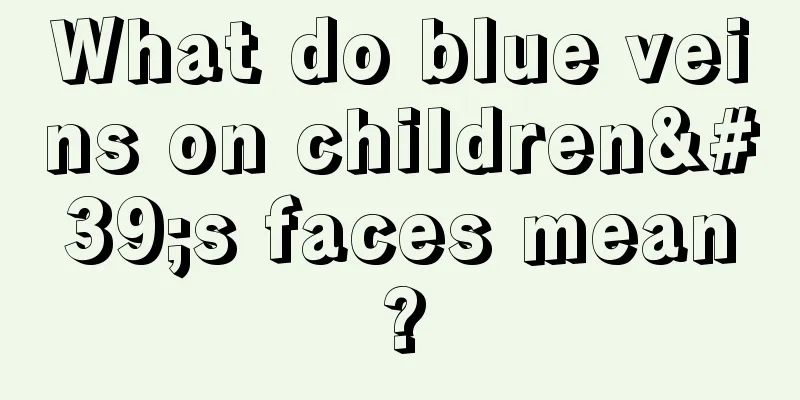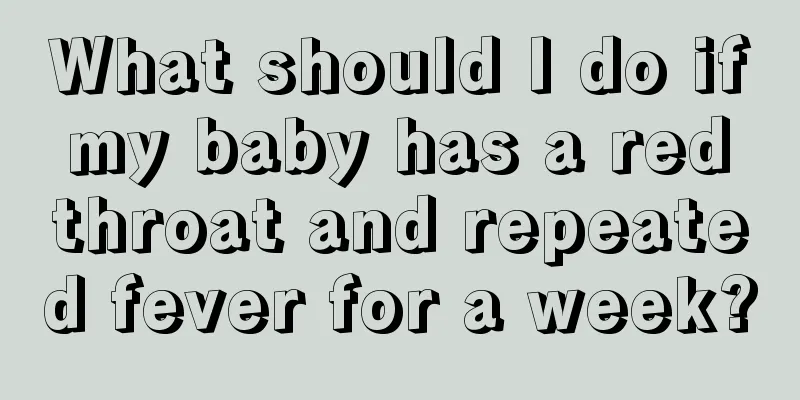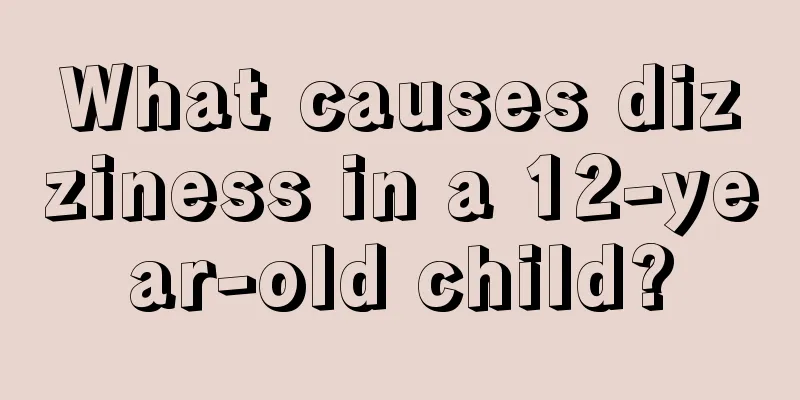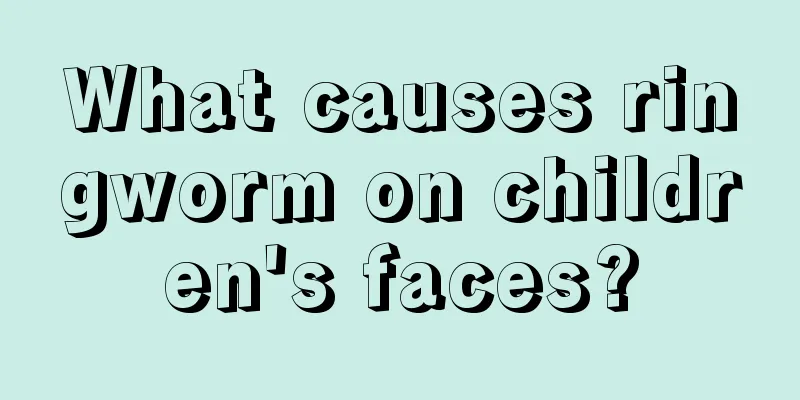How to treat sneezing and fever in children

|
How to treat children's sneezing and fever? Many mothers are very concerned about this issue. If you want to know how to treat it, you need to figure out what causes children's sneezing and fever. If it is just a common cold, then mothers need to use medication for the cold, but if it is caused by other diseases, the treatment method will change. So before treatment, mothers need to judge what causes children's sneezing and fever. Only by knowing the cause can you know how to treat it. 1. Why do we sneeze? Sneezing usually refers to the involuntary release of nasal allergies or itching deep in the outer tract. Sneezing can be a symptom in itself, or it can be accompanied by other symptoms such as an itchy, runny, stuffy nose, or itchy, watery eyes and mouth breathing - every common cold symptom. If you start sneezing and have other allergy symptoms, such as asthma or eczema, you may have developed a tolerable sensitivity to a stimulus. Sneezing is the body's way of eliminating irritants or foreign objects from the nasal passages. There are four reasons why people sneeze. When they have a cold, they sneeze to help clear their nose. Sneezing also occurs when you have allergic rhinitis or hay fever, expelling allergens from your nasal passages. People with vasoconstrictive rhinitis typically have a runny nose and sneeze frequently. The swollen sneeze comes from the blood vessels in the nose becoming sensitive to humidity, temperature, and even spicy food. The fourth most common cause of sneezing is non-allergic rhinitis, also known as eosinophilic rhinitis, or "NARES." The patient has symptoms of chronic rhinitis, but the reaction to various allergens is non-positive. And for an unknown reason, their bodies seem to release histamine, causing allergic symptoms such as sneezing. An occasional sneeze is nothing to worry about. Sneezing as a symptom of a cold may disappear as the cold disappears, usually within two weeks. However, persistent sneezing or other allergy symptoms such as runny nose, stuffy nose, sore throat, or itchy, watery eyes may warrant a visit to your doctor. Sneezing can come from irritation of the nasal passages, such as pepper and tiny foreign particles. Pollen, mold, or other allergens. 2. Causes of sneezing and fever in children The fever and cough caused by the common cold are mostly irritating coughs, like itchy throat, without phlegm; they occur day or night, and are not accompanied by wheezing or rapid breathing. The baby will feel drowsy, have a runny nose, and sometimes have a fever with a body temperature exceeding 37°C; poor spirits and loss of appetite. After sweating and fever subside, the symptoms disappear, but the cough may continue for 3 to 5 days. It is more common when there is a big temperature difference, and people usually experience catching a cold, such as kicking off the quilt when sleeping at night, wearing too few clothes, catching a cold when taking a bath, etc. Cold air is a purely physical factor that stimulates the respiratory mucosa and causes an irritating cough. It is common in babies who do little outdoor activities. When the baby suddenly goes out and inhales cold air, the delicate respiratory mucosa will experience congestion, edema, exudation and other inflammatory reactions, thus inducing a cough reflex. There is no microbial infection initially, but if it persists for a long time, viral and bacterial infections may occur. 3. Timely treatment If a child has a runny nose, sneezing, coughing, and fever, you must pay attention to it, as it may develop into pneumonia in severe cases, so timely treatment is needed. It is best to choose medication based on blood routine tests. If it is not convenient to check blood routine tests, oral antibiotics can be used. Children with fever, colds, and coughs should have a longer course of illness. After diagnosis and treatment by the doctor, take medication and care at home according to the doctor's instructions. Do not take your child to the hospital repeatedly just because of a persistent fever, which will increase the chance of repeated infection. In the early stages of a child's cold, when the condition is not serious, you can give him some children's cold medicine first; when the fever reaches 38.5℃ or above, take antipyretics in time, try to rest quietly, and drink plenty of water. When the condition worsens, you should go to the hospital for treatment in time. It is not advisable to handle it by yourself at this time, especially do not take adult medicines casually. 4. Nursing for cold and fever It is very important for parents to take care of their children. If a child cannot sleep, there is no need to force him/her to sleep. He/she can sit and play. Children with vomiting and diarrhea should be given liquid food on the first day. For children with common fever and cough, they should eat delicious, light and nutritious food. In winter, they must be given hot food. Noodles and rice soup are good. Fever and sweating consume a lot of body fluids, so you should drink more water and juice, and eat more fruits. Do not bathe your child when he is sick, because bathing will increase blood circulation, which is not good for rest and will cause the child to catch a cold again. Children with a lot of phlegm will indeed increase their secretions after taking a bath, but this can only be done after a week of illness, when they have a slight cough in the morning, have a good appetite, can play, and have no fever. Then they can take a bath before going to bed. If you sleep well, you can wash it every other day. The above is all about how to treat children's sneezing and fever. Mothers can judge the cause of their children's sneezing and fever based on the above content. If it is just a common cold, you can give your child some medicines to clear heat and detoxify, and reduce fire. But if it is other infectious diseases, you need to go to the hospital immediately for medical treatment. Be careful not to give your child medicine casually. |
<<: Is it okay to cover a child's sweat when he has a fever?
>>: Causes of yellow teeth in children
Recommend
Prevention of chapped skin in children, baby skin problems should not be underestimated
Children's skin problems are not only related...
Why is the newborn baby's stomach rumbling?
Every mother is very concerned about the health o...
What to do if children have a cold, stuffy nose or runny nose
When children have a cold, many parents will be p...
What causes white spots on children's fingers? How to treat it?
If children have white spots on their fingers, pa...
What medicine should be used for children’s red buttocks?
Parents often find that their baby's buttocks...
What should I do if my eleven-month-old baby has trouble sleeping?
Poor sleep is not only a problem for adults, but ...
Symptoms of milk powder allergy in children
Although we usually support mothers to breastfeed...
At what age do children grow taller?
I believe that as a mother, in addition to hoping...
5 ways to care for baby sweating in summer
Babies sweat easily in the summer. They often swe...
Children cough when exercising
Coughing is a disease of the respiratory tract an...
Reasons why baby's lips are not red
Every parent wants their child to have rosy lips....
The baby only coughs but has no other symptoms
If the baby just has a cough and no other symptom...
Why can't children drink honey?
Honey is a familiar food that has great benefits ...
How to treat tinnitus in teenagers
Many friends who suffer from tinnitus do not pay ...
Causes and care of baby's stuffy nose
Many babies will have nasal congestion. In this c...
